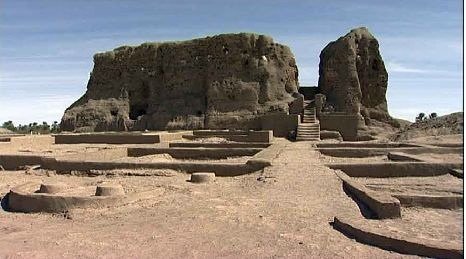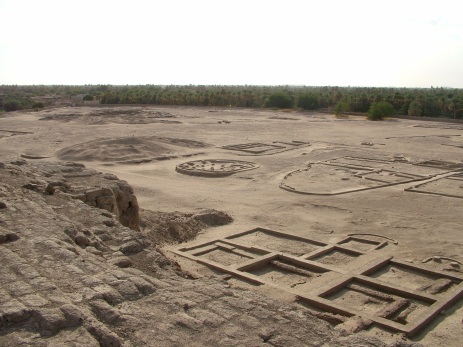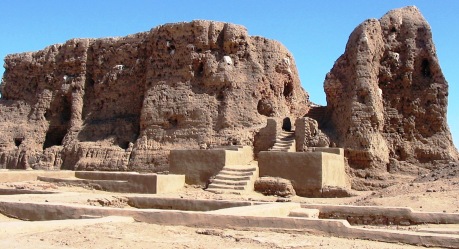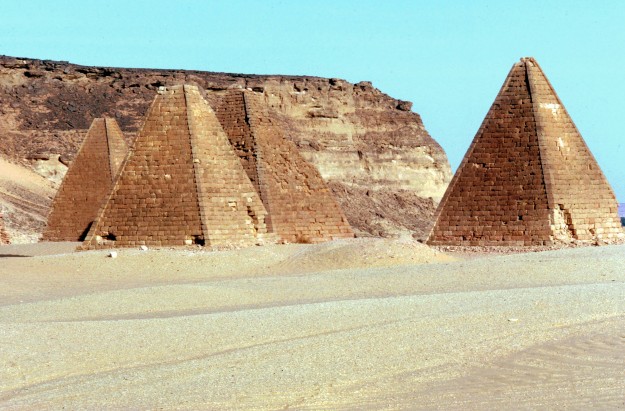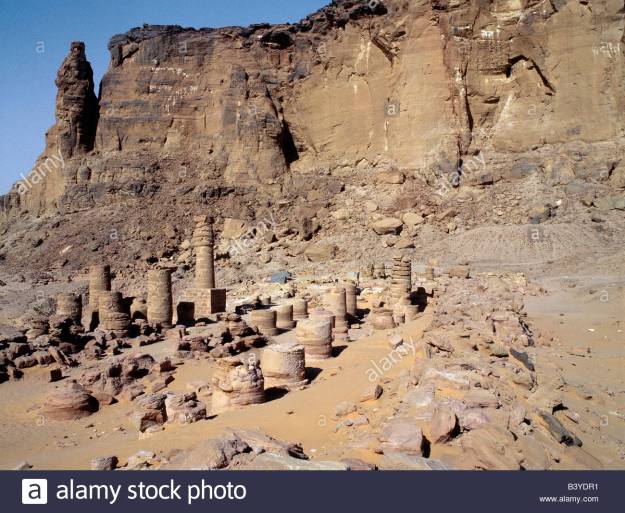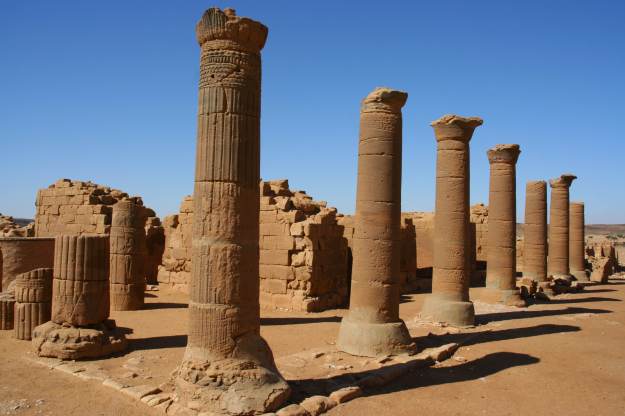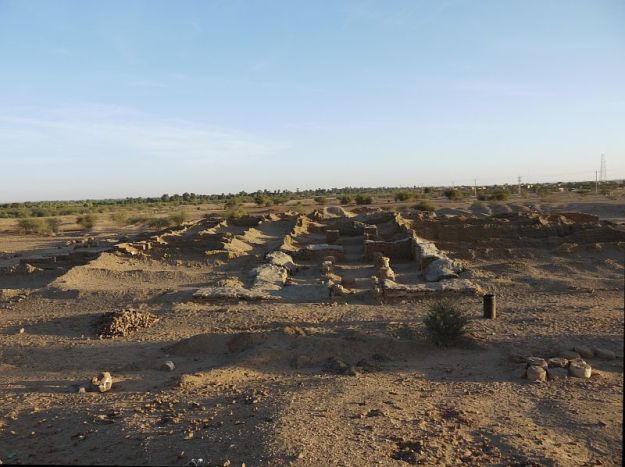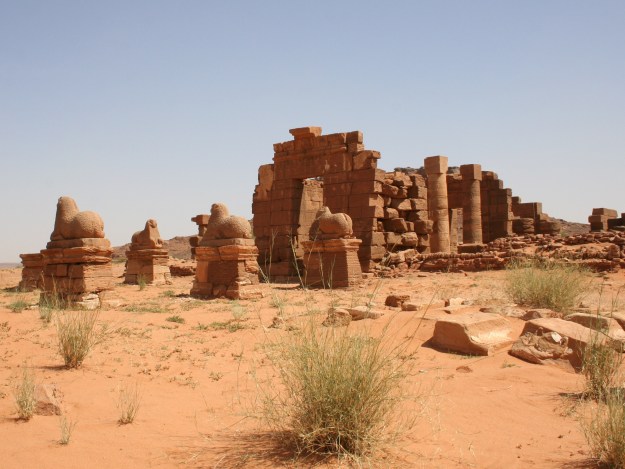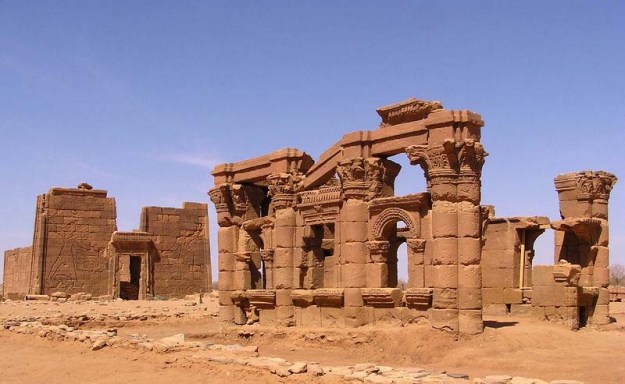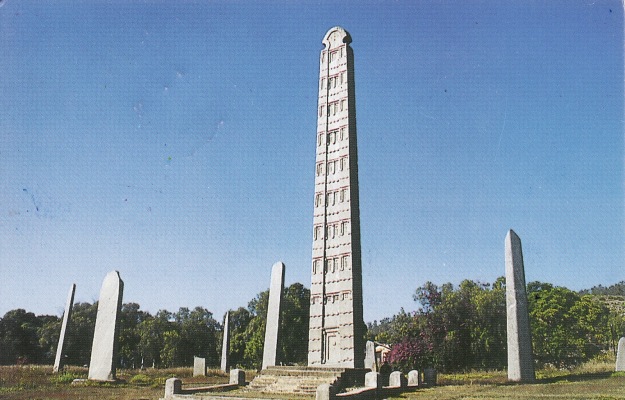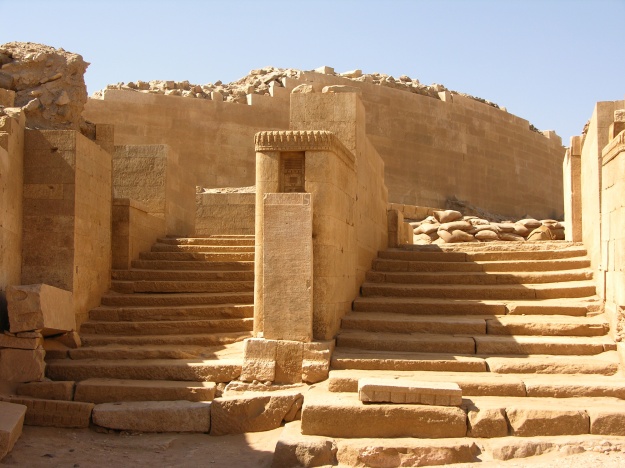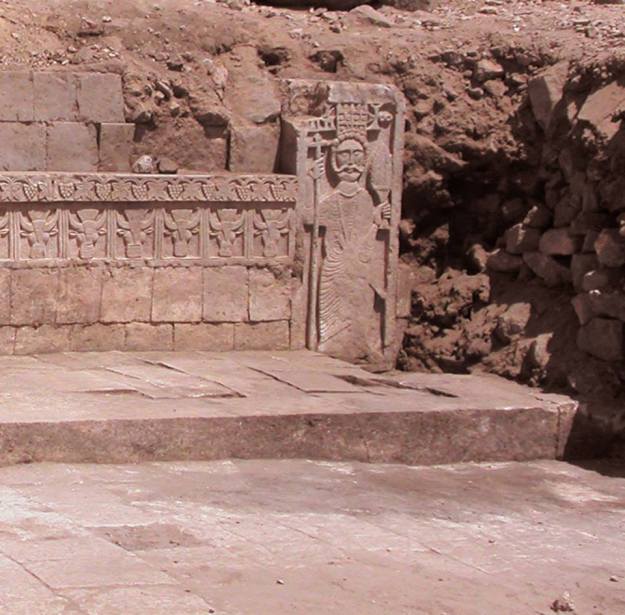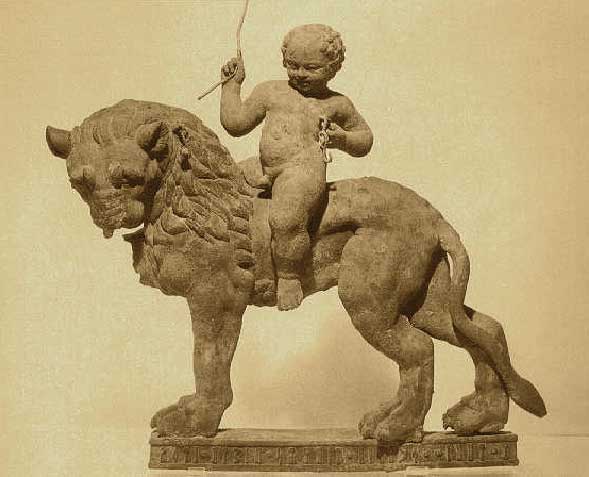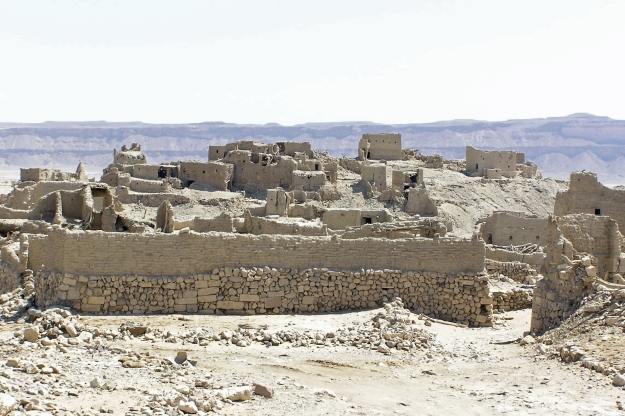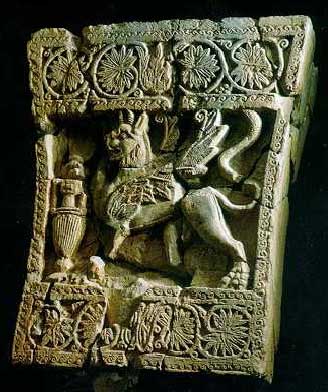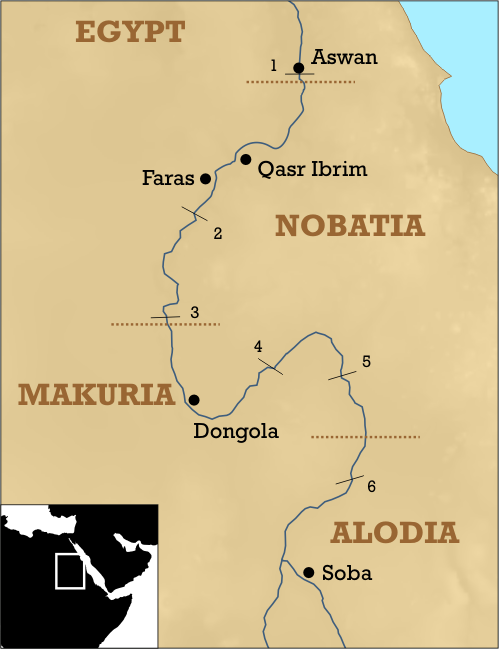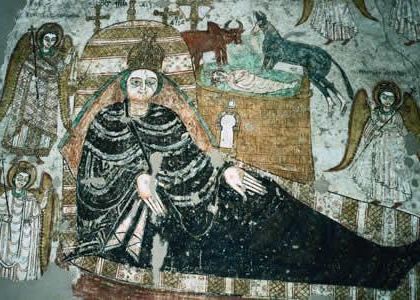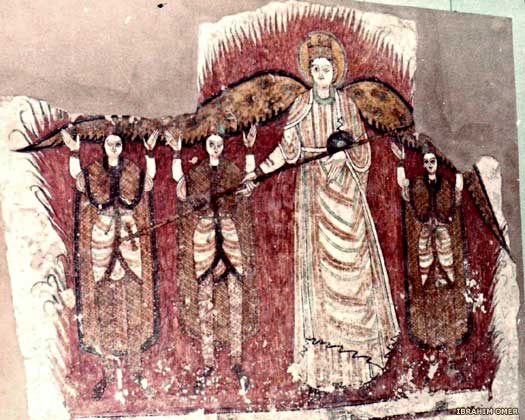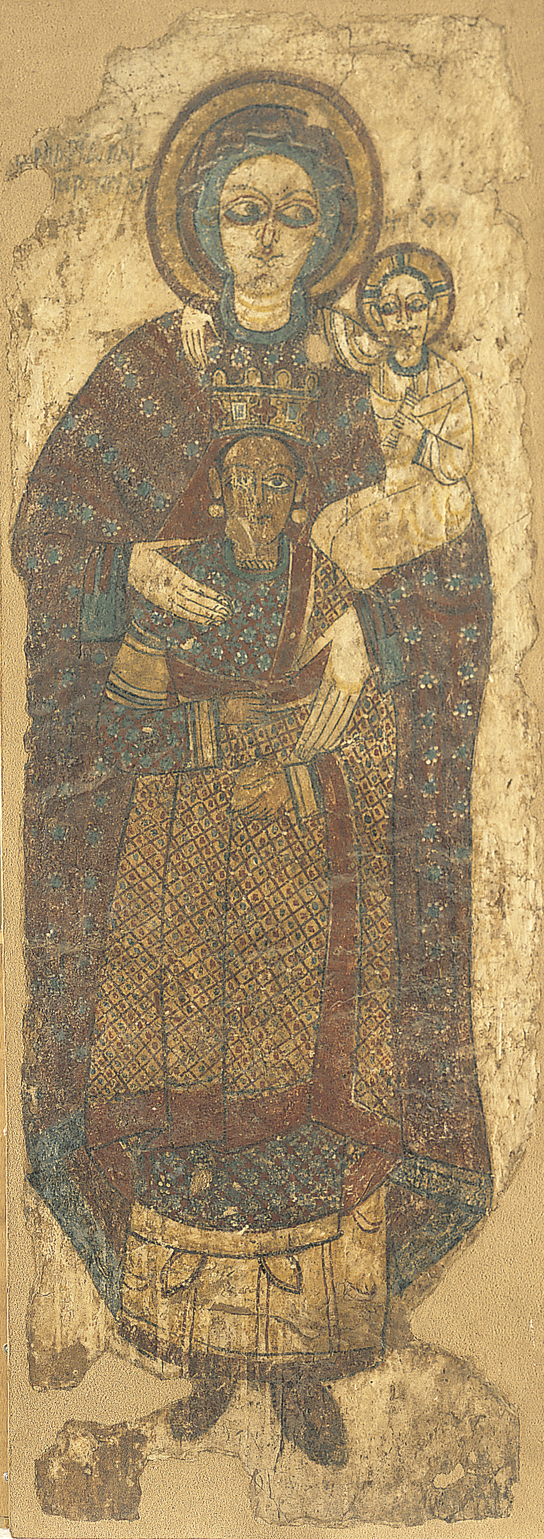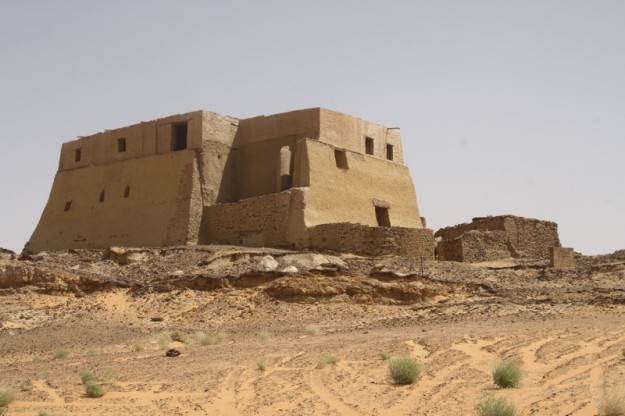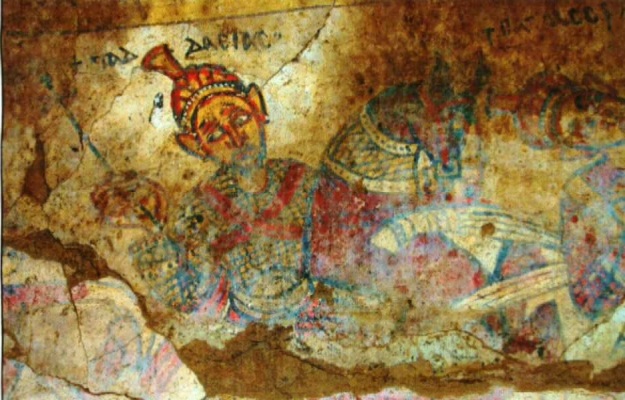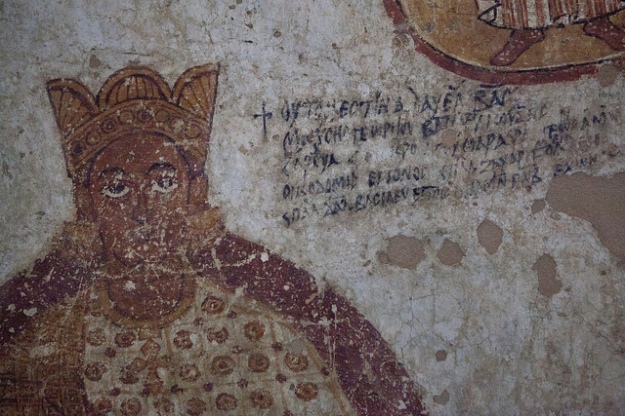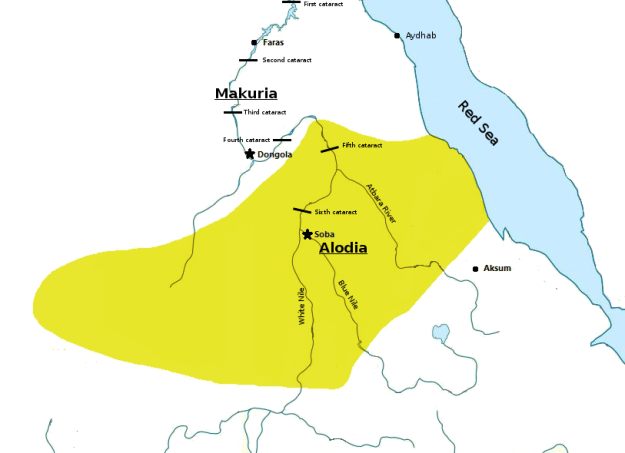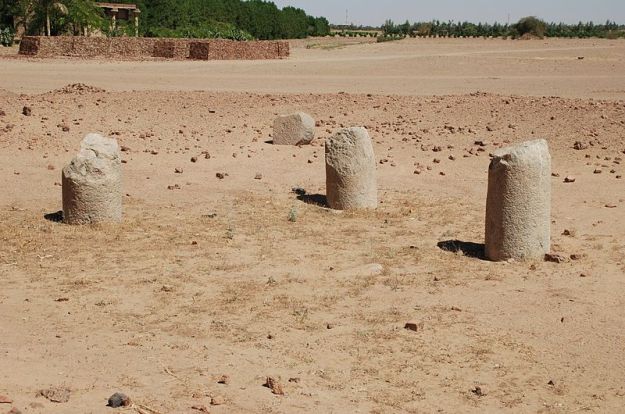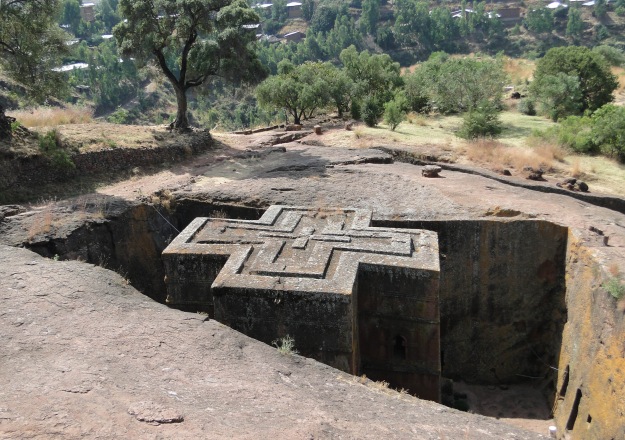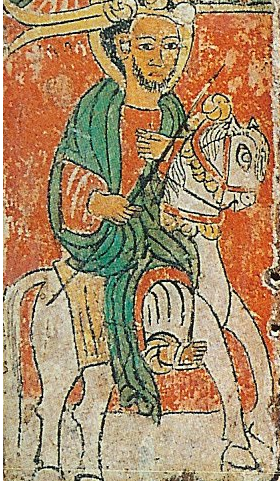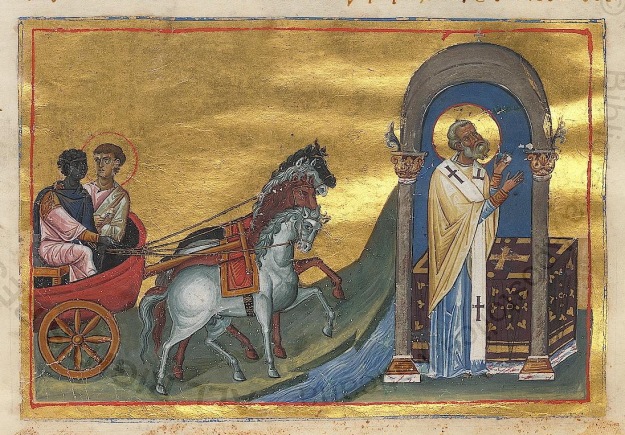The following text is a response sent to an email dispatched to me by the Chairman of the exiled Oromo Parliamentarians who struggle for the Independence and Self-determination of the 5 millennia long Kushitic Ethiopian Nation of the Oromos.
The Hamitic – Kushitic Oromo Nation – due to criminal, inhuman and evil persecution conceived by the colonial powers (France, England and America) and executed by the colonially promoted barbaric and incestuous pseudo-Christian Abyssinians – lost their kingdoms and were engulfed within the Cemetery of Nations Fake Ethiopia, which consists in the world’s most tyrannical realm and the location of the world’s more abhorrent, more enduring, and more multifaceted genocides. There are more than 45 million Oromos in Abyssinia (Fake Ethiopia) and Kenya today, despite the notorious and pathetic falsehood propagated by Wikipedia.
The present text enumerates all the major points of historical distortion and falsification carried out and diffused by the colonial academia, mass media, and diplomats, as well as by their local agents and criminal executioners, i.e. the barbaric, incestuous and Anti-Christian tribes of Amhara and Tigray (: the Abyssinians), who usurped the fair name of Ethiopia, which historically denotes the land of North Sudan and the Kushitic Nation that prospered there either in the Antiquity or in the Christian Era. Both, the Oromos and the Arabic-speaking (but not Arab) populations of Northern-Central Sudan are the descendants of Ancient Sudan’s (i.e. Ancient Ethiopia’s) Kushitic populations.
Representative photographic documentation was herewith added to the text in order to better illustrate the topic.
Refutation of historical forgeries propagated by European colonials and incestuous Abyssinians
Dear Chairman,
Thank you for your email and news!
I never watch or hear anything produced by the BBC because I know quite well that they have systematically distorted History either they present programs about Asia or they feature Africa, Europe or America.
Thanks to your email, I noticed that this video is not the actual documentary but an announcement for mere publicity.
But it is true that Axum was an Abyssinian capital, and it had nothing to do with Kush/Ethiopia, which was located at the time in the area of today’s North Sudan.
Ancient Sudan, as the true Ethiopia (or Kush), and its great past
Kush/Ethiopia was a millennia-long civilization; its three main periods of rise cover the three main stages:
1) Kerma Civilization (2300-1500 BCE),
(Kerma Deffufa, North Sudan)
2) Napata/Karima Civilization (which is mainly called Kushitic Civilization: 800 – 400 BCE) and
Napata (Karima & Jebel Barkal, North Sudan)
3) Meroe/Bagrawiyah Civilization (which is mainly called Meroitic Civilization and corresponds to what Ancient Greeks & Romans called ‘Ethiopia’: 400 BCE – 350 CE).
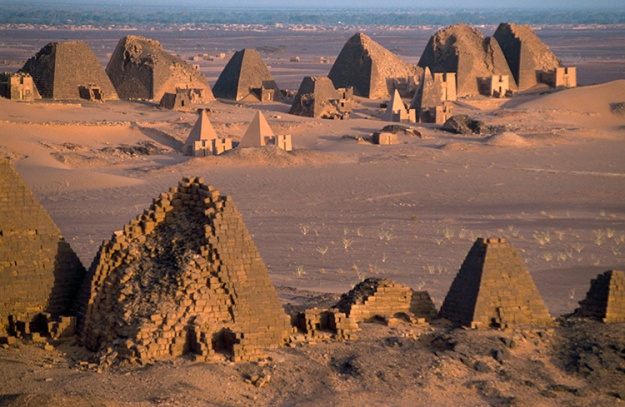
Meroe, Capital of Ethiopia (Kush: North Sudan)
Mussawarat as Sufrah, a major city of the Meroitic Kingdom of Ethiopia in North Sudan
Wad ben Naga, a major city of the Meroitic Kingdom of Ethiopia in North Sudan
Naqa, a major city of the Meroitic Kingdom of Ethiopia in North Sudan
Kush/Ethiopia has ethnic, linguistic and cultural affinities with Kemet/Egypt, because both nations are Hamitic, like the Berbers (who are all the people living from Libya to Morocco), the Tuareg, the Haussa, and others. In fact, ancient Egyptian and Sudanese (:Ethiopian) civilizations were deeply intertwined and for the Ancient Egyptians the holiest place in the world was Napata (today’s Karima in North Sudan) as the original location of god Amon of Thebes (Luxor)!
((Beware! All Wikipedia articles contain truth and lies mixed in a sophisticated manner as per the French-English-American needs. Plus: there was never such thing as a “Nubian Civilization”; there were Nubians in both Kemet/Egypt and Kush/Ethiopia, but they never developed an independent civilization, nor did they form a separate state. Only in Christian times, there was a separate state called Nobatia, which existed for several centuries. When people speak of “Nubian pyramids” in today’s Sudan, either they are ignorant and uneducated or they forge History deliberately usurping the History that belongs to present day Sudanese and Oromos and which is Kushitic/Ethiopian of nature, and not Nubian))
Axumite Abyssinia: a late, tiny state of Yemenite settlers in Africa
Axum, Capital of the Kingdom of Abyssinia (covering Pre-Christian and Christian times)
Ancient blocks with Yemenite Sabaean inscriptions from Yeha
Totally unrelated to the above was the formation of a small state around Yeha and Axum (Abyssinia) from Semtic, Yemenite settlers, who crossed the Red Sea in later ages. Yeha must have been built around the 3rd-2nd c. BCE and Axum around the 2nd-1st c. BCE, so they belong to the third (3) stage of Ancient Kushitic Civilization as per above. Earlier dates given for these settlements are academic dishonesty due to extensive bribery of scholars, which is – as you already know – a regular practice among the various dictatorial governments, Amhara- or Tigray-led, of Addis Ababa. Example: this article contains numerous deliberate errors and falsehood – https://en.wikipedia.org/wiki/D%CA%BFmt
In fact, Axum was a Yemenite kingdom on African soil; they were not Africans and for their entire pre-Islamic History, they were more concerned with Yemen than with Africa. However, despite all the lies that the Abyssinian governments and agents diffuse, the ancient Axumites had nothing in common with the Queen of Sheba (who lived around the 10th c. BCE in Yemen, when no Yemenite was on African soil). Sheba (Sabaa / Sabaeans) was actually the name of one of the most important Yemenite states; other important states were Qataban, Himyar, Awsan and Hadhramaut.
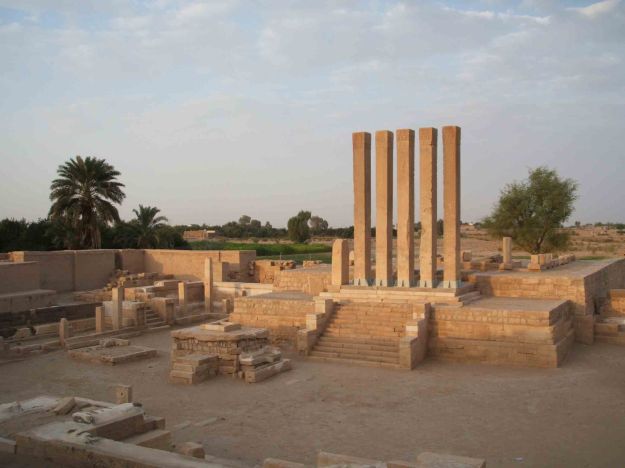
Marib, Capital of the Yemenite Kingdom of Sheba / Sabaa (Sabaeans)
Awam Temple – Yemenite Kingdom of Sheba / Sabaa (Sabaeans)
Zafar, Capital of the Yemenite Kingdom of Himyar (Himyarites)
Antiquities from Timna, Capital of the Yemenite Kingdom of Qataban
Shabwah, Capital of the Yemenite Kingdom of Hadhramaut
Antiquities from Shabwah, Capital of the Yemenite Kingdom of Hadhramaut
The Abyssinians (Habasha), who crossed the Red Sea and settled in Africa, were already mentioned in the Ancient Yemenite (Sabaean) texts as a renegade tribe (Abasat), and we have every reason to understand that they were expelled from their country of origin due to their heresy and evilness.
Meroe (Ethiopia) – Axum (Abyssinia) – Yemenite Sheba & Himyar – Berberia (Sudan’s coast) – The Other Berberia & Azania (Somalia’s coast)
The Axumite Abyssinians formed indeed a small state (limited between Axum and Adulis/near Massawa) and they never reached ever up to the area of Avalites (Assab) near the Red Sea straits. On the contrary, the two Yemenite states Sheba & Himyar merged and they controlled the entire Somali coast from the Horn of Africa down to today’s Daresalaam. This vast coast was a Yemenite colony for several centuries (perhaps up to a millennium at the times of early Islam), and it was named Azania (according to the Ancient Greek text Periplus of the Red Sea, which is also known as Periplus of the Erythraean Sea and was written in the middle of the 1st c. CE: around the years 70-75 CE).
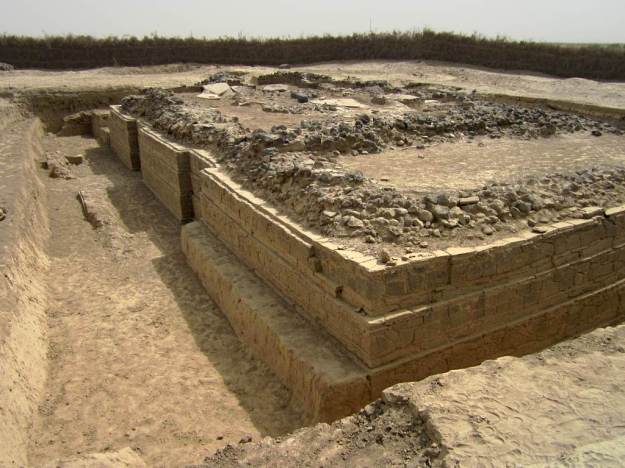
Adulis (near Massawa, the only harbor of Axumite Abyssinia), Foundations of Christian Church
The same text gives details about Meroe, which was a big continental state with links across Sahara and with Roman Egypt, but did not control today’s Sudanese coast where – according to the same text – lived the ‘Berbers’ (Kushites who were rather independent from Meroe); for this reason that coast was called Berberia.
Same origin population lived in the coast from Avalites (Assab) to the Horn itself (so the area that today corresponds to Eritrea’s southernmost part, Djibouti, Somaliland, and a small part of Puntland); that’s why in the Periplus of the Erythraean Sea, the area from Assab to the Horn is named as “The Other Berberia” – something that also highlights the Kushite presence in that area. Beyond the Horn, the populations were Kushitic as well: the ancestors of today’s Somalis. Simply, the term ‘Azania’ (used within the Periplus of the Erythraean Sea) seems to have rather been a ‘political’ term to designate the Yemenite (Sheba/Himyar) colony across the East African coast.
Christian Ethiopian states on Sudan’s territory & Axumite Abyssinia
Axum accepted Christianity in the early 4th c. CE. According to vicious Amhara/Tigray propaganda, Axum was ‘the first Christian state in the world’; this is a lie. The first Christian state in the world was Osroene (an Aramaean state located on part of the territory of today’s Northern Syria and Southeastern Turkey): King Abgar the 9th of Osroene (179 – 214 CE) accepted Christianity as the official religion of his country – more than 150 years before King Ezana of Axum accepted Christianity after the Aramaean Syrian Frumentius (slave, missionary, bishop) preached Christianity there. The state of Osroene was indisputably the first Christian state in the world, and in addition to the above, there are discussions about King Abgar the 8th of Osroene being eventually the King to have Christianized Osroene earlier and about King Abgar the 5th of Osroene being eventually the King to have exchanged letters with Jesus (https://en.wikipedia.org/wiki/Abgar_V).
After Ezana made Axumite Abyssinia a Christian country, in coordination with the Christian Roman authorities in Alexandria and Constantinople, he attacked Meroe/Ethiopia (around 360 CE) and destroyed its capital at today’s Bagrawiyah. He then retreated after annexing the occupied territory. He then claimed that he was king of Axum and king of Ethiopia, like every other king who after invading a new land was considered to be king of that land.
However, Meroe/Ethiopia was a vast state covering most of today’s Northern Sudan’s territory. Ezana attacked Meroe’s capital from the south (probably advancing alongside Atbarah river) but the territory of Ethiopia that was occupied by Abyssinia’s Ezana was less than 20% of Ethiopia’s total area.
The claim was ridiculous and it would be tantamount to Hitler claiming to be the ruler of Soviet Union in 1942, because he only invaded part of its western territory.
However, the Abyssinian annexation of 20% of Ethiopia’s (Kush’s) territory did not last for long, and as early as the beginning of the 5th c. CE (so around the period 400-450 CE) Christian Nobatia rose in the Kushitic / Sudanese / Ethiopian North. Slightly later, a second Christian state, Makuria was formed in the Kushitic / Sudanese / Ethiopian mainland of the old Meroitic kingdom. Not much later, Christian Alodia, the third Christian Kingdom of Kush / Ethiopia / Sudan, appeared in the area around today’s Khartoum.
((There are many correct and many wrong points here:
https://en.wikipedia.org/wiki/Nobatia / https://en.wikipedia.org/wiki/Makuria / https://en.wikipedia.org/wiki/Alodia)) Mainly, take into consideration that it is wrong to depict as ‘Nubian’ any other Christian kingdom of Kush / Sudan / Ethiopia except Nobatia. The population of Makuria and Alodia was Kushitic/Ethiopian, i.e. the descendants of the non-Christian Meroitic kingdom’s population.
Archaeological evidence makes it clear that all Meroitic sites were vastly depopulated after Ezana’s invasion of the small southern portion of Meroe / Ethiopia. For the rest of the 4th c. and the 5th c. CE Kush’s (Ethiopia’s) mainland in today’s North Sudan was depopulated. I interpreted this phenomenon as the massive Exodus of the ancestors of Oromos, who wanted to avoid the forced Christianization of their land and therefore left that land to find safe shelter further in the South, until they finally reached – after several steps – the highlands of today’s Oromia:
https://www.academia.edu/24273923/The_Meroitic_Ethiopian_Origins_of_the_Modern_Oromo_Nation_-_By_Prof._Dr._Muhammad_Shamsaddin_Megalommatis
However, when the Amhara / Tigray Abyssinians use the name ‘Ethiopia’ for the country that they formed after their colonial expansion and the genocides that they perpetrated in the period 1850-1950, they forget that Ezana’s claim was politically empty (since he did not invade but only a small portion of Ethiopia) and historically void, because ‘Christian Ethiopia’ as historical term defines the three Christian Kingdoms of Nobatia, Makuria and Alodia, and not the small kingdom of Axum, which collapsed after the arrival of Islam during the 7th c., whereas Christian Makuria survived until ca. 1400 CE and Christian Alodia existed until 1510-1520. This means that there was Christian continuity in Sudan / Ethiopia / Kush, but not in Abyssinia.
Fresco from the Cathedral of Faras, Capital of the Christian Kingdom of Nobatia
Fresco from the Cathedral of Faras, Capital of the Christian Kingdom of Nobatia
Fresco from the Cathedral of Faras, Capital of the Christian Kingdom of Nobatia
Old Dongola (Dunqulah), Capital of the Christian Ethiopian Kingdom of Makuria, North Sudan
Old Dongola (Dunqulah), Capital of the Christian Ethiopian Kingdom of Makuria, North Sudan – Fresco of the Adoration of the Magi
Christian Ethiopian Art & Inscription from the Ethiopian Kingdom of Makuria, North Sudan
Major expansion of Alodia, the third (and southernmost) Kingdom of Christian Ethiopia (: Sudan)
Soba (Khartoum), Capital of the Christian Ethiopian Kingdom of Alodia – foundations of one of the main churches
Tombstone of the Christian Ethiopian King David, Soba (Khartoum) – Capital of Alodia
Axum Abyssinia, Agaw Kushite Kingdom, and Yekuno Amlak’s Satanic state
Almost 300 years after the disappearance of Axum, around 950 CE, in the northern part of today’s Abyssinia, the tiny Christian Agaw state was formed with Lalibela as capital and it lasted until 1270; however this was also a Kushite kingdom because the Agaw Nation is of Kushitic ethnic background. A lot of posterior traditions due to evil colonial motives have obscured the historical reality around the Agaw kingdom, but you can be sure for the following:
Lalibela, Capital of the Christian Kushitic Kingdom of Agaw in the southern extremities of the Old Abyssinian Kingdom of Axum
a. The Agaw Kingdom had no royal or ethnic connection with / continuity from Axum; all opposite claims and mentions of intermarriage are fake. The Semitic descendants of the Axum kingdom were surely among the Agaw kingdom’s subjects, but they did not belong to the ruling royal elite; they were one of the nations that lived under the Agaw scepter and we have reason to believe that they hated it too much.
Agaw kingship is totally unrelated to the posterior barbaric state launched by Yekuno Amlak. Pictorial documentation demonstrates the Kushitic identity of the Christian Kingdom of Agaw. The blood of the brave last King of the Agaw Kingdom is a curse for the Amhara & Tigray Abyssinians, heralding their total extinction.
b. The Agaw state was a small Kushitic Christian kingdom that never claimed royal or ethnic descent from the Semitic, Yemenite kingdom of Axum and never claimed to be ‘Ethiopia’ – because at those days the Ethiopian kingdoms were Nobatia, Makuria (which merged soon afterwards into one state), and also Alodia.
c. There was indeed a religious continuity between Axum and Agaw kingdoms.
d. There was never an Axumite Abyssinian text to support an eventual claim of royal Axumite descent from the Queen of Sheba & Solomon. Not one Axumite Abyssinian king ever made such a claim.
e. The Semitic Abyssinian Amhara state that was launched by Yekuno Amlak in 1270 has no royal connection with either the Axum or the Agaw kingdoms.
f. The Semitic Abyssinian Amhara state has indeed an ethnic connection with the Semitic descendants of the Axum kingdom; one part of them represents a rather direct descent from the Axumite population (Tigray), whereas the other part is characterized with a certain amalgamation with other populations (Amhara).
This state consisted in a racist entity and an oppressive mechanism against all the non-Amhara and non-Tigray subjects of its territory.
g. In striking contradiction with the Axum and the Agaw kingdoms, the barbaric state launched by Yekuno Amlak at 1270 was never a real kingdom (and much less, an empire, as the Amhara and Tigray Abyssinians have fallaciously pretended), because
i) there was not a dynastic continuity to properly ensure a real royal descent (if the so-called ‘king’ is not the son, grandson, brother, uncle, cousin or nephew of a king, if he does not even belong to the noble class, i.e. the peerage, but has a common or low descent, he can never be a king) and
ii) – more importantly – there is no notion of ‘family’ in the incestuous Amhara society, which means that there cannot be proper ‘royal’ family to offer heads of states possibly able be called ‘kings’ or ’emperors’. The sons of different lowly prostitutes who were ‘married’ to several men can never become ‘kings’ by any standards anytime anywhere in the world. That’s why the Oromo, the Hadiya, the Somali, the Kaffa and other real African kings never accepted those trashy, vulgar, incestuous Amhara or Tigray barbarians as ‘kings’ and never conceded to several demands for a ‘royal’ meeting (: a king never encounters a filthy trash like the Amhara – Tigray bogus-kings).
h. What is more unknown to most people worldwide is that there is not even religious continuity between the Axum and the Agaw kingdoms on one side and the state of Yekuno Amlak on the other side. Post-1270 ‘Christianity’ among the Amhara – Tigray incestuous tribes has nothing in common with either the Lalibela-centered Agaw Christianity or the Axum-based Old Abyssinian Christianity.
The reason is simple; with the proclamation of Yekuno Amlak’s villainous and atrocious state, a new text of fake royal propaganda appeared, ‘Kebra Negast’, which was accepted by the Abyssinians down to Haile Selassie as the epitome of the state’s nature, claims and aspirations. The book accepts Christianity in an heretic manner whereas it distorts all the basic principles of Christian morality. Furthermore, Kebra Negast propagates a great number of Anti-Christian concepts, Satanic theories, counterfeit ideas, historical fallacies, dynastic forgeries, and factual distortions that make it totally impossible for anyone accepting this text to properly be a Christian.
This is the reason the Amhara and the Tigray Abyssinian rulers never accepted Christian Catholic missionaries in their marginal, arid, tiny and ill-fated bogus-kingdom, and they always slaughtered them mercilessly. During the period 1300-1850, more Catholic priests were killed in the then tiny territory of Abyssinia than in any other part of the world, the Islamic Caliphate and other Islamic Empires included.
Two different Abyssinian claims to the Name of Ethiopia: Ezana’s and Haile Selassie’s
Finally, one must clearly make a distinction between Ezana’s claim to the title of ‘king of Ethiopia’ and the recent Abyssinian policies (that date back only to 1950s) and false pretensions that Abyssinia can be possibly called ‘Ethiopia’, which consist in sheer usurpation of a name that is totally unrelated to the Amhara and Tigray Abyssinians and their past.
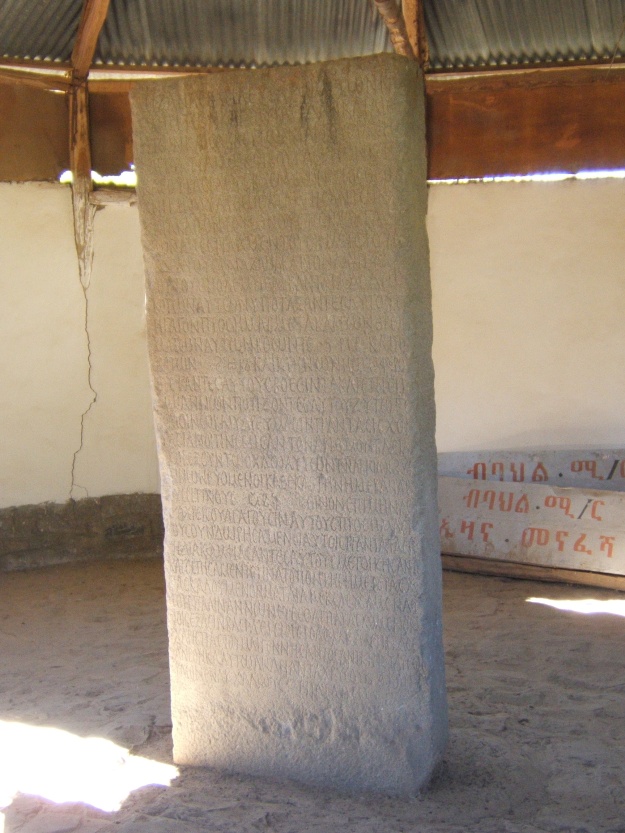
King Ezana’s inscription – the Greek text
King Ezana’s claim was something normal as practice at those days. Example: Publius Cornelius Scipio was a Roman general and later consul who is often regarded as one of the greatest generals and military strategists of all time. His main achievements were during the Second Punic War (218 – 201 BCE) where he is best known for defeating Hannibal at the final battle at Zama, one of the feats that earned him the agnomen Africanus. Because he won over the African state of Carthage, he was called Scipio the ‘African’.
However, when the Abyssinian control of the small part of Ethiopian (Sudanese) territory ended few decades later and Nobatia, Makuria and Alodia rose to prominence as the three Christian states on the Ethiopian (e. g. North Sudanese) territory, any Axumite Abyssinian claim to the name of Ethiopia was purely void, fully insignificant, and practically meaningless.
As a matter of fact, the modern claim is rather relevant to Anti-Christian eschatological and messianic beliefs introduced among the Abyssinians only with the aforementioned forgery of Kebra Negast, a text that can be considered as Christian as the devious Jewish forgery of ‘Talmud’ can be described as Biblical Hebrew!
“Ethiopia shall hasten [to stretch out] her hand readily to God“
The eschatological and messianic beliefs introduced among the Abyssinians are based on a Biblical text of the Old Testament (Psalms, 67:32) in which the Septuagint Greek text reads “ἥξουσι πρέσβεις ἐξ Αἰγύπτου, Αἰθιοπία προφθάσει χεῖρα αὐτῆς τῷ Θεῷ”, which is translated in Modern English “Ambassadors shall arrive out of Egypt; Ethiopia shall hasten [to stretch out] her hand readily to God”. (http://www.ellopos.net/elpenor/greek-texts/septuagint/chapter.asp?book=24&page=67)
{{Here I must add that you must never use the false English translation prepared by the evil, bastard and Freemason king of England James I (reign: 1603 – 1625), the so-called King James Version – KJV – because it is part of the same Satanic conspiracy that brought the Amhara and the Tigray Abyssinian invaders to your lands and provided for the 150-year long Oromo Genocide and many other genocides of subjugated African nations across Abyssinia and elsewhere. This extremely distorted translation (King James Version / KJV) serves only to diffuse confusion and falsehood and to promote the enslavement of all the nations of the world to Satan and all the filthy and evil spirits. King James I was an evil person and an accomplished Satanist, who took even the pain of writing a book titled “Daemonologie”, which is “a philosophical dissertation on contemporary necromancy and the historical relationships between the various methods of divination used from ancient Black magic. This included a study on demonology and the methods demons used to trouble men while touching on topics such as werewolves and vampires”. (https://en.wikipedia.org/wiki/Daemonologie) You understand, of course, that whoever diffuses the words of filthy spirits and evil demons cannot possibly be involved in the holy texts of any religion, except for the purpose of falsifying them as per the guidance given to him by the evil spirits which he serves. With reference to modern English translations of the Christian Bible, beware also of many other fake English translations that repeat the same mistakes of KJV which is not a correct and direct translation from the Ancient Greek text but from a late Jewish forgery, the so-called masoretic text of which the earlier manuscript dates back only to 9-10th c., namely more than 1000 years after the Greek text of the Hebrew Bible! More: http://www.newadvent.org/cathen/10035a.htm / But this is all mistaken: https://en.wikipedia.org/wiki/Masoretic_Text}}
Now, why was the verse “Ambassadors shall arrive out of Egypt; Ethiopia shall hasten [to stretch out] her hand readily to God” thought to be of eschatological and messianic meaning?
A Kushitic Ethiopian Prince from Meroe & Ancestor of the Oromos speaks with Philip, one of Jesus’ disciples
This is due to the fact that there is a reference in the New Testament (Acts, 8:26-40) according to which there was an ‘Ethiopian’ prince, who while traveling in Palestine met and spoke with Philip, one of Jesus’ disciples (https://en.wikipedia.org/wiki/Philip_the_Apostle), and then accepted Jesus’ preaching and became Christian.
Here you have the entire narration: “26 And the angel of the Lord spake unto Philip, saying, Arise, and go toward the south unto the way that goeth down from Jerusalem unto Gaza, which is desert. 27 And he arose and went: and, behold, a man of Ethiopia, an eunuch of great authority under Candace queen of the Ethiopians, who had the charge of all her treasure, and had come to Jerusalem for to worship, 28 Was returning, and sitting in his chariot read Esaias the prophet. 29 Then the Spirit said unto Philip, Go near, and join thyself to this chariot. 30 And Philip ran thither to him, and heard him read the prophet Esaias, and said, Understandest thou what thou readest? 31 And he said, How can I, except some man should guide me? And he desired Philip that he would come up and sit with him. 32 The place of the scripture which he read was this, He was led as a sheep to the slaughter; and like a lamb dumb before his shearer, so opened he not his mouth: 33 In his humiliation his judgment was taken away: and who shall declare his generation? for his life is taken from the earth. 34 And the eunuch answered Philip, and said, I pray thee, of whom speaketh the prophet this? of himself, or of some other man? 35 Then Philip opened his mouth, and began at the same scripture, and preached unto him Jesus. 36 And as they went on their way, they came unto a certain water: and the eunuch said, See, here is water; what doth hinder me to be baptized? 37 And Philip said, If thou believest with all thine heart, thou mayest. And he answered and said, I believe that Jesus Christ is the Son of God. 38 And he commanded the chariot to stand still: and they went down both into the water, both Philip and the eunuch; and he baptized him. 39 And when they were come up out of the water, the Spirit of the Lord caught away Philip, that the eunuch saw him no more: and he went on his way rejoicing. 40 But Philip was found at Azotus: and passing through he preached in all the cities, till he came to Caesarea”. (http://www.ellopos.net/elpenor/greek-texts/new-testament/acts/8.asp)
An ancestor of the Oromos accepted Jesus centuries before the ancestors of the Amhara and Tigray Abyssinians
Miniature painting depicting Jesus’ disciple Philip and the Meroitic Ethiopian prince who accepted Jesus’ preaching and was baptized. From the Menologion of the Eastern Roman Emperor Basil II, which was compiled around the year 1000 – currently in the Vatican Library. (More: https://en.wikipedia.org/wiki/Menologion_of_Basil_II)
So, the historical forgers interpret the earlier verse (Psalms, 67:32) as being a prophecy that was materialized in the person of the Ethiopian prince. As you can understand, this concerns Kush / Sudan, i.e. the Kingdom of Ethiopia with Meroe as capital which was located in today’s North Sudan. Even more so because the New Testament excerpt includes a typically Meroitic / Ethiopian word, namely Kandake (Candace), which is not a personal name, but the title itself (lit. ‘queen’) in Meroitic / Ethiopian language. This article is correct: https://en.wikipedia.org/wiki/Kandake
We also know, thanks to Meroitic / Ethiopian textual documentation, that the title ‘King’ in Ancient Meroitic / Ethiopian was ‘Qore’ (https://en.wikipedia.org/wiki/List_of_monarchs_of_Kush). This Kushitic word has been preserved down to our times in Af Somali as ‘Boqor’ (https://en.wikipedia.org/wiki/Somali_aristocratic_and_court_titles).
Meroitic/Kushitic/Sudanese/Ethiopian Candace: Unrelated to Abyssinians
The use of the term ‘Candace’ makes the proof even stronger that the earlier Biblical text (Psalms) prophesied indeed the Christianization of Sudan / Kush / Ethiopia, first in the form of the traveling prince, and second, few centuries after the travel of the Ethiopian Meroitic prince in Palestine, when Nobatia, Makuria and Alodia became the three Christian states of Sudan/Ethiopia.
Abyssinia in any form (Axum or posterior) is totally unrelated to this story, and tiny Axum at the time was a non Christian country and remained as such for another 300 years! No Axumite Abyssinian prince traveled to Palestine at the times of the Apostles (Jesus’ disciples) and of course, there was no Candace/Kandake in Axum at those days or any time later!
The Abyssinian claim may look absurd. But this is always the nature of forgery! When evil people and barbaric nations like the Amhara / Tigray Abyssinians try to usurp the Past and the History of civilized nations, they raise false claims and come up with incredible misinterpretations that only criminals or paranoids dare express.
Last but not the least, the whole affair of the recent claim (which started with Haile Selassie in the 1950s) involves Westerners (colonial French academia), who then convinced the fake king Haile Selassie about using the name of Ethiopia instead of Abyssinia. This has a lot to do with Freemasonic and Zionist plans and conspiracies regarding Eastern Africa; however this is rather politics and not History.
A Sudanese-Oromo alliance to overthrow the genocidal Abyssinian tyranny
The best chance for the Oromos to counterbalance and overthrow the colonial conspiracy against their nation is to
1. reach out to today’s Arabic-speaking people and rulers of Sudan,
2. help them realize that
a. they are not Arabs, but linguistically Arabized Kushites of Sudan
b. they are straight descendants of the Ancient Sudanese / Kushites / Ethiopians
c. as such they are the truly fraternal nation to the Oromos
d. the real offspring of the Ancient Sudanese / Kushites / Ethiopians are both, the Oromos (who left their land but preserved and saved their language) and the Arabic-speaking Sudanese (who preserved their land but lost their own language)
e. the real name of their land (Sudan) and of Oromia is Ethiopia / Kush and that you and they must take it back from the Abyssinians
f. the Arabization project across Africa and Asia was conceived by the three colonial powers (France, England and America) that are controlled by Freemasonry and Zionism in order to destroy the nations to which it was projected and on which it was imposed (from Morocco to Iraq), and this is the reason for all the problems and disasters that fell on each of those nations, and
g. the only means of survival of today’s Sudan is the detachment from the fallacy of Pan-Arabism and the return to the true historical identity (Kushitic – Ethiopian) that their land had for millennia, and
3. establish an Oromo – Sudanese alliance to overthrow the tribal tyranny of the Abyssinians who consist in a minority within the colonial state of Fake Ethiopia.
Best regards,
Shamsaddin

